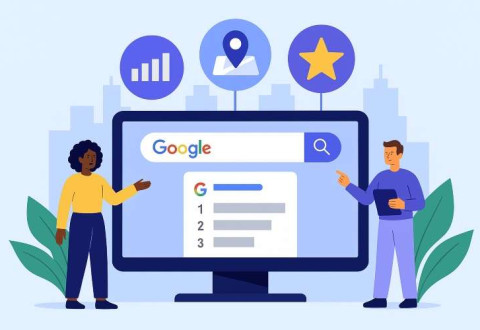The Google 3-pack represents one of the most valuable real estate opportunities in local search marketing. This premium section displays the top three local business listings directly within Google’s search results for location-based queries. Business owners who secure these coveted positions experience dramatic increases in visibility, customer inquiries, and revenue.
Also known as the local pack, map pack, or snack pack, this feature transforms how customers discover local businesses. Instead of scrolling through countless search results, users can instantly access essential business information including ratings, addresses, phone numbers, and operating hours. The Google 3-pack appears for searches like “restaurants near me,” “dentist in Chicago,” or “plumber 24 hours.”
Understanding and optimizing for the Google 3-pack has become essential for local business success. With mobile searches driving local intent and customers making quick purchasing decisions, ranking in these top three positions can make the difference between thriving and merely surviving in today’s competitive marketplace.
- Understanding Google 3-Pack and Its Impact
- Google’s Local Ranking Factors
- Google Business Profile Setup and Optimization
- NAP Consistency and Business Categories
- Content Strategy: Descriptions, Keywords, and Posts
- Visual Content and Review Management
- Location Optimization and Technical SEO
- Advanced Features and Services
- Performance Tracking and Tools
- Directory Management and Common Mistakes
- Getting Started: Your Complete Action Plan
- FAQs
Understanding Google 3-Pack and Its Impact
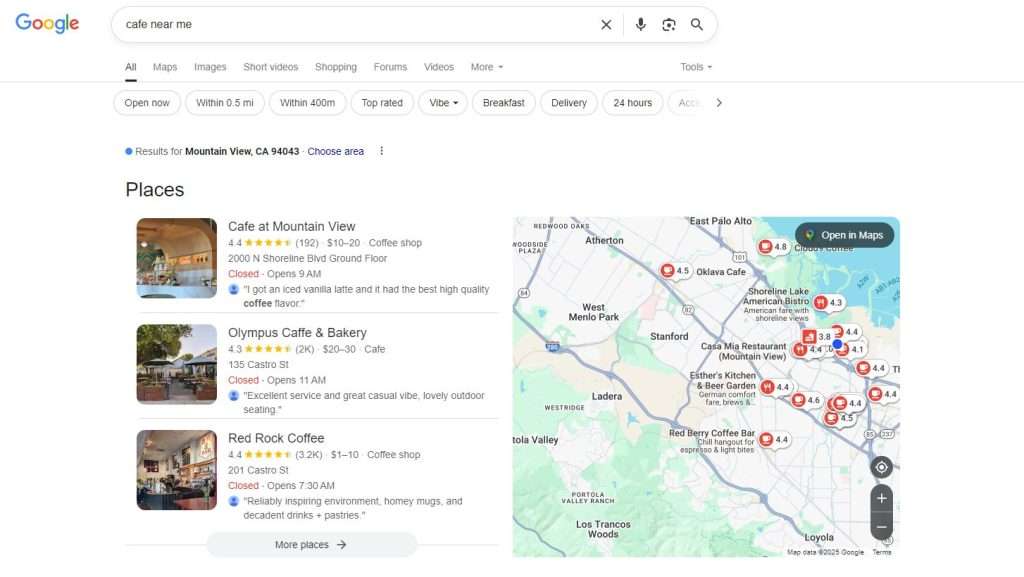
Statistical data reveals the Google 3-pack’s enormous impact on local business discovery. Research shows that 46% of all Google searches have local intent, with users actively seeking nearby products and services. Among these local searchers, 44% specifically click on local pack results, demonstrating high engagement rates.
Even more compelling, 68% of users prefer clicking on Google 3-pack results over traditional organic listings. This preference stems from the comprehensive information display and visual appeal that builds immediate trust and credibility.
For businesses, ranking in the Google 3-pack provides instant credibility without advertising costs. These positions signal authority and relevance to potential customers, often resulting in higher conversion rates compared to standard search results. The visibility boost can transform local marketing effectiveness and drive significant revenue growth.
Google’s Local Ranking Factors
Google evaluates local businesses using three primary ranking factors that determine Google 3-pack positioning. Understanding these factors enables businesses to develop targeted optimization strategies that improve local search visibility.
Relevance measures how well business listings match user search intent and query context. Google analyzes business categories, descriptions, services, and profile completeness to determine relevance scores. Businesses with comprehensive profiles and accurate category selections typically outrank competitors with incomplete information.
The relevance factor depends heavily on keyword alignment between search queries and business profiles. Local businesses must ensure their Google Business Profile accurately reflects their services, specialties, and target keywords while maintaining authenticity and compliance with Google’s guidelines.
Distance considers the physical proximity between business locations and searchers. Google’s algorithm factors in exact addresses, city boundaries, and geographic limitations when determining distance relevance. Businesses located closer to search origins generally receive higher rankings, though other factors can override distance advantages.
This proximity element emphasizes the importance of accurate location data and strategic location selection for businesses expanding their service areas. Understanding local search patterns helps businesses optimize their location strategy for maximum visibility.
Prominence evaluates business credibility and authority through multiple signals including customer reviews, online citations, backlinks, directory listings, and overall digital reputation. This factor proves most complex to optimize since it encompasses numerous external validation sources.

Prominence building requires consistent reputation management, active review acquisition, and strategic online presence development across multiple platforms. Businesses with strong prominence signals typically maintain higher Google 3-pack rankings regardless of distance or minor relevance variations.
Google Business Profile Setup and Optimization
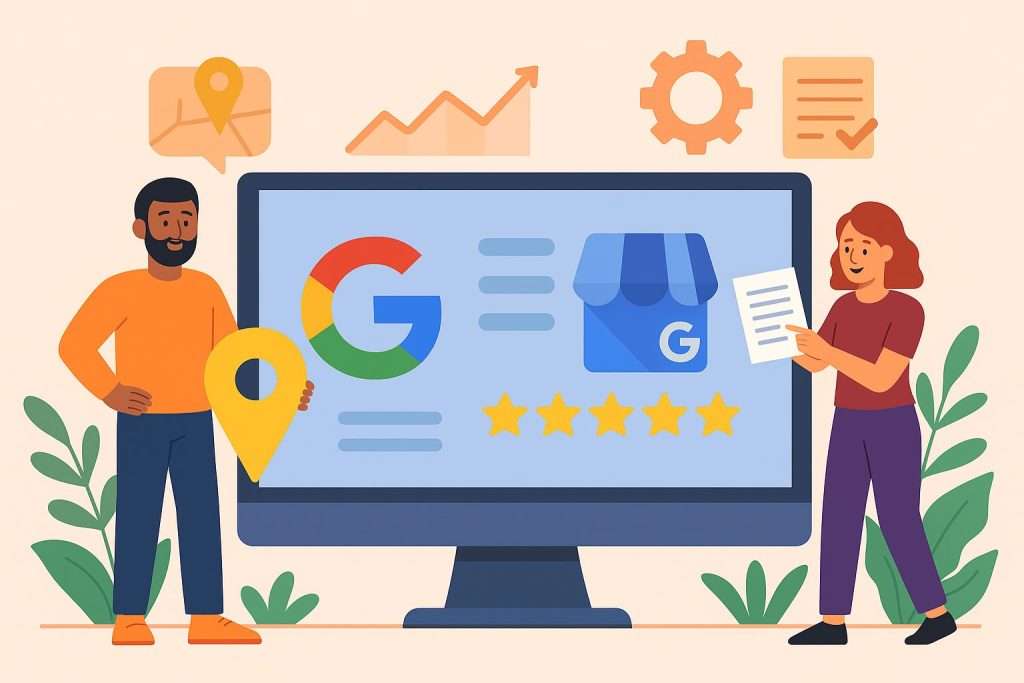
Creating and optimizing a Google Business Profile forms the foundation of successful Google 3-pack optimization. This process begins with claiming existing business listings or creating new profiles for businesses without current Google presence.
Claiming Your Business Profile starts with searching Google for your business name and location. If an existing listing appears, click “Claim this business” and follow the verification process. Google may require phone verification, postcard verification, or alternative methods depending on business type and location.
For businesses without existing listings, visit Google Business Profile and create a new account. Provide accurate business information during the initial setup process, ensuring all details match official business documents and existing online presence.
Profile Verification typically involves receiving a verification code via mail, phone, or email. This step proves business legitimacy and unlocks full profile management capabilities. Complete verification promptly to begin optimization and ranking improvement efforts.
Complete Profile Optimization requires filling every available field with accurate, detailed information. Business names should remain close to official registered names while incorporating relevant keywords tastefully and naturally.
Contact information must maintain perfect consistency across all online platforms. Include complete addresses, phone numbers, websites, and email addresses where applicable. Service area businesses should clearly define their coverage areas and service locations.
Business hours require regular updates, especially during holidays, special events, or seasonal changes. Accurate hours prevent customer frustration and negative reviews while supporting positive user experience signals that Google values for ranking purposes.
Business attributes, accessibility features, and demographic identifiers help Google understand business specialties and target audiences. Complete these sections thoroughly to improve relevance matching and attract ideal customers through enhanced search visibility.
NAP Consistency and Business Categories
Name, Address, and Phone (NAP) consistency across all online platforms directly impacts Google 3-pack rankings. Google aggregates business information from multiple sources to validate accuracy and determine trustworthiness signals that influence local search positioning.
NAP Consistency Management requires maintaining identical business information across Google Business Profile, websites, directories, social media platforms, and citation sources. Even minor variations in formatting, abbreviations, or punctuation can confuse Google’s validation processes and harm rankings.
Common consistency issues include using different phone number formats, abbreviating street types inconsistently, or varying business name presentations. Create a standardized NAP format and apply it consistently across all online presence touchpoints.
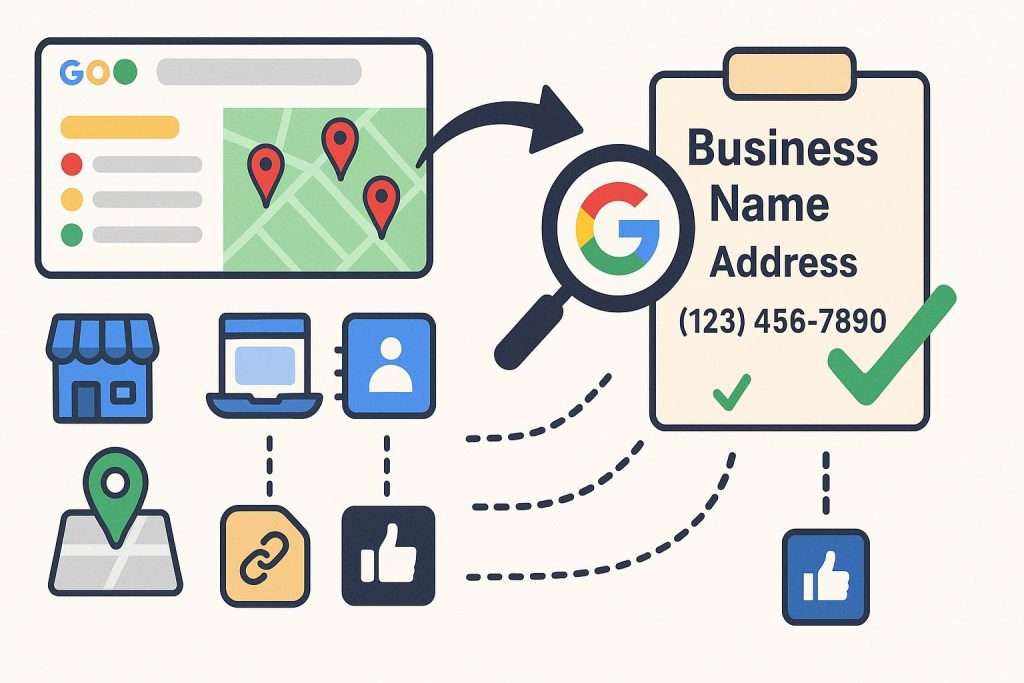
Regular audits help identify inconsistencies before they impact rankings. Monitor major directories, review sites, and citation sources to ensure information accuracy and make corrections promptly when discrepancies arise.
Business Category Selection represents the most critical ranking factor for Google 3-pack optimization. Primary categories should align perfectly with core business services while additional categories can capture secondary services and specialties.
Competitive analysis reveals optimal category selections by examining successful competitors’ choices. Tools like GMB Everywhere and Pleper provide insights into competitor category strategies and ranking performance patterns.
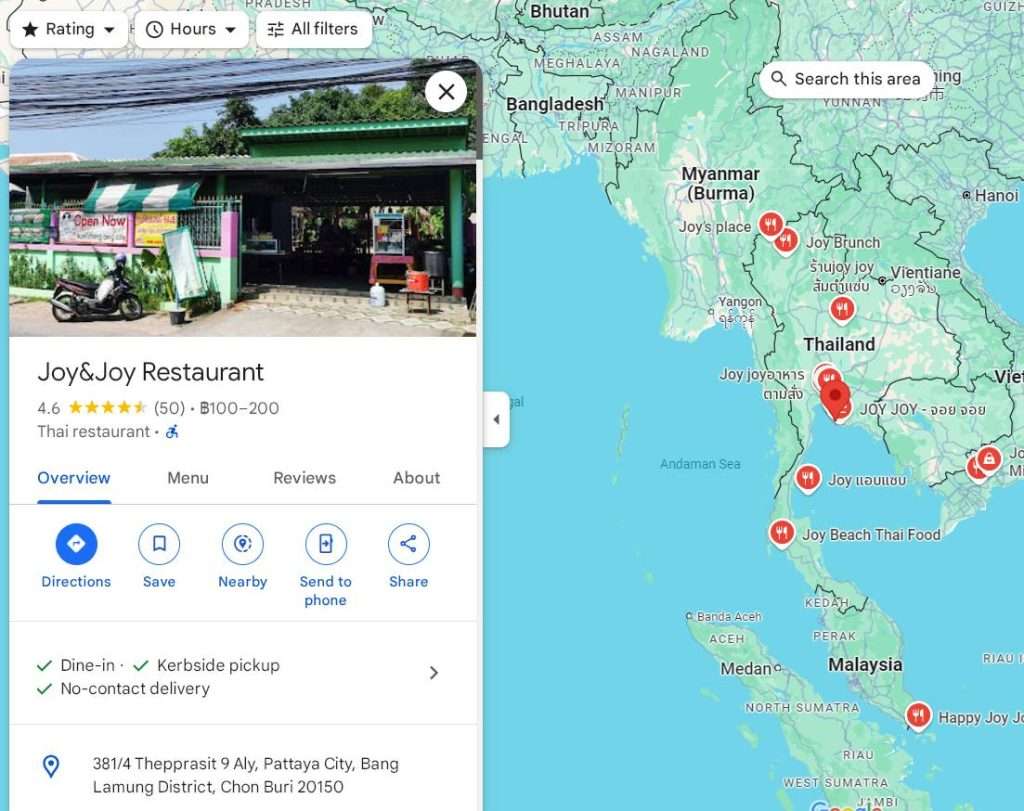
Category alignment with website content creates consistency signals that Google values for relevance determination. Ensure primary business categories match website messaging, service pages, and content focus areas to maximize relevance scores.
Strategic category selection considers search volume, competition levels, and business positioning goals. Sometimes choosing more specific categories can provide better ranking opportunities than highly competitive broad categories, depending on business objectives and market conditions.
Content Strategy: Descriptions, Keywords, and Posts
Effective content strategy for Google 3-pack optimization combines compelling business descriptions, strategic keyword integration, and regular Google Posts that demonstrate business activity and engagement.
Business Description Optimization within Google’s 750-character limit requires balancing informative content with strategic keyword placement. Descriptions should naturally incorporate location-specific keywords while clearly communicating business value propositions and unique selling points.
Hyperlocal keywords typically provide better conversion potential than generic industry terms. Focus on location-specific phrases that potential customers actually use when searching for local services, rather than broad keywords with high competition and low commercial intent.
Local Keyword Research emphasizes understanding customer search behavior and intent patterns within specific geographic markets. Tools like Google Keyword Planner, Search Console, and local SEO platforms reveal valuable keyword opportunities with strong commercial intent.
Long-tail local keywords often provide better ranking opportunities and higher conversion rates. Phrases like “emergency plumber downtown Chicago” typically generate more qualified leads than broad terms like “plumber Chicago” due to specific intent and reduced competition.
Google Posts Strategy demonstrates business activity while providing additional keyword integration opportunities and customer engagement touchpoints. Regular posting schedules signal active business management to Google’s algorithm while keeping customers informed about services, offers, and updates.
Post types include updates, offers, events, and products, each serving different strategic purposes. Updates share business news and improvements, offers promote special deals with call-to-action buttons, events announce important dates, and product posts showcase specific services or merchandise.
Consistent posting schedules with high-quality images and compelling copy improve engagement metrics that positively influence local rankings. Posts with customer interaction, shares, and clicks provide strong user engagement signals that Google considers for prominence evaluation.
Visual Content and Review Management
Visual content and customer reviews significantly influence Google 3-pack rankings through user engagement signals and trust-building elements that Google’s algorithm recognizes and values for local search positioning.
Visual Content Optimization requires high-quality images and videos that showcase business locations, services, products, and customer experiences. Google specifies technical requirements including minimum resolutions, file sizes, and format specifications for optimal display and ranking benefits.
Business photos should include professional exterior and interior shots, team photos, service demonstrations, and customer interactions. High-resolution images between 10KB and 5MB perform best, while videos should maintain 720p quality or higher with file sizes up to 75MB.
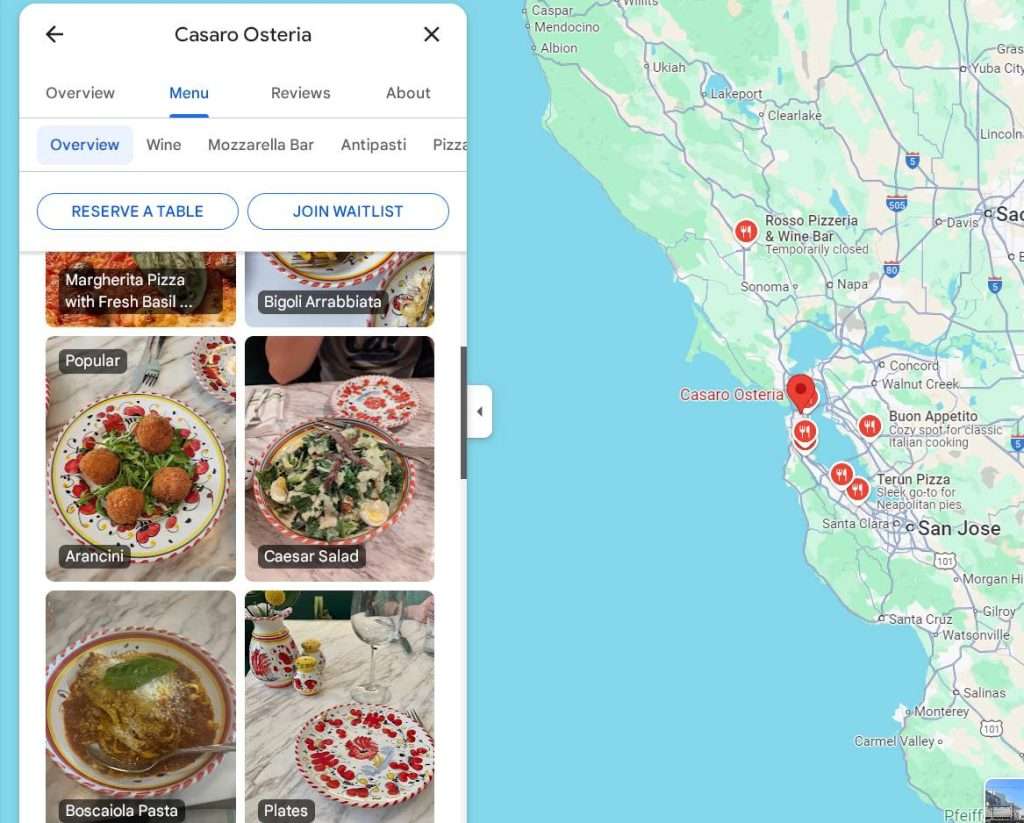
Customer-generated visual content often provides stronger authenticity signals than professionally produced materials. Encourage satisfied customers to share photos and videos while visiting your business or using your services, as this content type typically generates higher engagement and trust signals.
Research indicates that 91% of customers prefer seeing visual content before making purchase decisions, making image optimization crucial for conversion optimization beyond ranking benefits.
Review Management Strategy encompasses both acquisition and response processes that build reputation and provide valuable ranking signals through customer feedback quantity, quality, and recency factors.
Systematic review acquisition involves multiple touchpoints throughout the customer journey, from service completion follow-ups to email campaigns and in-person requests. Timing requests appropriately increases response rates while maintaining customer satisfaction levels.
Responding to all reviews demonstrates business commitment to customer satisfaction while providing additional opportunities for keyword integration and local search optimization. Genuine, personalized responses build trust with potential customers while signaling active business management to Google.
Review photos significantly enhance credibility and engagement, with visual reviews typically receiving higher attention and trust scores from potential customers browsing local business options.
Location Optimization and Technical SEO
Location optimization and technical SEO create the foundation for strong Google 3-pack performance by ensuring Google can accurately understand business locations, service areas, and website quality signals.
Location Targeting Strategy involves understanding geographic boundaries, proximity factors, and service area optimization that influence local search visibility within specific markets and customer locations.
City boundaries and city center proximity play crucial roles in local rankings, with businesses closer to city centers typically receiving advantages for searches within those geographic areas. Understanding these proximity factors helps inform location strategy and expansion decisions.
Service area businesses require different optimization approaches than storefront locations, focusing on service coverage areas, location landing pages, and geographic keyword targeting rather than single-location optimization strategies.
Local Landing Pages provide targeted content for specific service areas while maintaining consistent NAP information and localized content that demonstrates genuine connection to local markets and customer needs.
Each location landing page should include unique, valuable content about local services, customer testimonials from that area, and location-specific information that proves authentic local presence rather than generic template content.
Technical SEO Elements ensure websites provide positive user experiences that support local search rankings through performance, accessibility, and mobile optimization factors that Google considers for overall business credibility assessment.
Mobile-friendliness represents a critical factor for local search success, as mobile devices generate the majority of local searches. Responsive design, fast loading speeds, and intuitive mobile navigation directly impact user experience and ranking potential.
Website speed optimization improves user engagement metrics while reducing bounce rates that could negatively impact local search performance. Core Web Vitals provide specific metrics that Google uses to evaluate technical website quality.
Structured data implementation helps Google understand business information, services, locations, and other relevant details that support local search optimization and rich snippet opportunities.
Advanced Features and Services
Google Business Profile offers advanced features that provide additional optimization opportunities and customer engagement touchpoints beyond basic profile information and standard optimization strategies.
Google Business Q&A Section enables proactive customer communication while creating opportunities for strategic keyword integration and frequently asked questions addressing that potential customers commonly research before making contact.
Monitoring and responding quickly to customer questions prevents misinformation while demonstrating responsive customer service that builds trust and credibility with potential customers browsing business profiles.
Strategic Q&A management involves anticipating common customer questions and providing comprehensive answers that incorporate relevant keywords naturally while addressing genuine customer concerns and information needs.
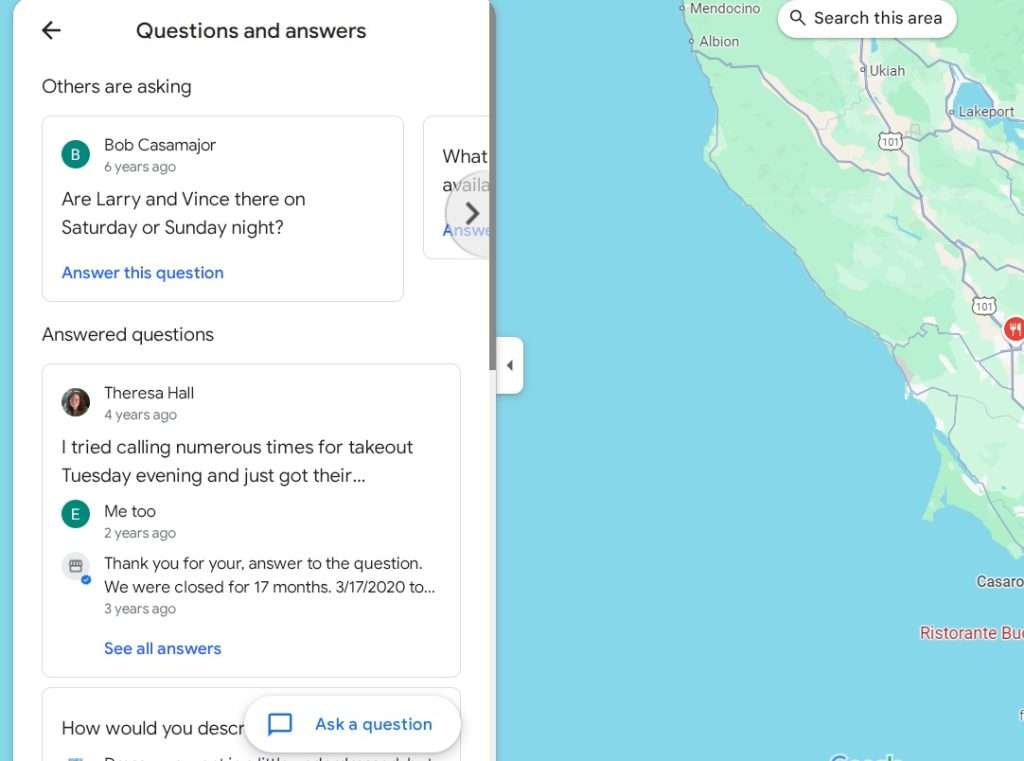
Services and Products Listings expand ranking opportunities for specific business offerings while providing detailed information that helps customers understand available options and make informed decisions about service selection.
Adding both predefined services from Google’s categories and custom services ensures comprehensive coverage of business capabilities while targeting specific keyword opportunities that potential customers might search for when seeking specialized services.
Product listings, where applicable, showcase specific merchandise or service packages with pricing information, descriptions, and images that support conversion optimization and provide additional content for Google’s relevance evaluation processes.
These advanced features require regular updates and maintenance to remain current and effective for both customer information needs and search optimization benefits that contribute to overall Google 3-pack ranking performance.
Performance Tracking and Tools
Monitoring Google 3-pack performance requires comprehensive analytics tracking and specialized tools that provide insights into ranking positions, customer behavior, and optimization opportunities for continuous improvement efforts.
Google Business Profile Analytics provides essential metrics including search queries that trigger business profile displays, profile views, website clicks, phone calls, direction requests, and booking conversions through the integrated performance section.
These built-in analytics reveal customer behavior patterns, popular search terms, and engagement trends that inform optimization strategies and help identify successful elements worth expanding or unsuccessful areas requiring improvement attention.
Tracking metrics over time reveals seasonal patterns, marketing campaign effectiveness, and competitive changes that impact local search performance and business discovery rates through Google 3-pack visibility.
Essential Local SEO Tools range from free Google tools to premium platforms that provide comprehensive tracking, competitive analysis, and optimization guidance for businesses serious about local search success.
Free tools include Google Business Profile management, Google Search Console for technical insights, and Google Analytics for website behavior tracking that supports local search optimization decision-making processes.
Premium tools like SEMrush provide local keyword tracking, competitor analysis, and ranking monitoring specifically designed for local search optimization. Local Falcon offers precise local ranking data from multiple geographic points within service areas.
BirdEye and similar reputation management platforms streamline review monitoring, response management, and customer feedback analysis that supports comprehensive local search optimization strategies.Rush Analytics offers specialized SEO tools including rank tracking, SERP monitoring, and competitor analysis that help businesses monitor their Google 3-pack performance alongside broader SEO metrics for comprehensive digital marketing insights.
Directory Management and Common Mistakes
Strategic directory management and mistake prevention ensure consistent online presence while avoiding common optimization errors that can harm Google 3-pack rankings and local search visibility.
Directory Listing Management involves maintaining accurate business information across 150+ potential listing sites that Google uses for business validation and prominence evaluation during local search ranking determination processes.
Major directories include Yelp, Facebook, Better Business Bureau, industry-specific platforms, and local chamber of commerce listings that provide citation signals supporting business legitimacy and local market presence.
Listing management tools streamline consistency maintenance across multiple platforms while identifying new citation opportunities and monitoring existing listings for accuracy and completeness over time.
Common Local SEO Mistakes include keyword stuffing in business names, maintaining inconsistent NAP information, purchasing fake reviews, neglecting profile maintenance, and technical website problems that harm user experience and search performance.
Keyword stuffing violations occur when businesses add excessive keywords to business names, descriptions, or other profile fields in ways that violate Google’s guidelines and appear unnatural to customers reading business information.
Fake review schemes create serious risks including business profile suspension, ranking penalties, and reputation damage that can require months or years to recover from once Google identifies artificial review patterns.
Neglecting profile maintenance allows outdated information, unanswered questions, and stale content to accumulate, signaling inactive business management that can negatively impact prominence scores and customer trust levels.
Prevention strategies include regular profile audits, consistent information updates, authentic review acquisition processes, and adherence to Google’s guidelines for sustainable long-term local search success.
Getting Started: Your Complete Action Plan
Beginning your Google 3-pack optimization journey requires a systematic approach that prioritizes high-impact activities while building sustainable practices for long-term local search success.
Immediate Action Steps start with claiming and verifying your Google Business Profile, ensuring complete and accurate information entry, and establishing consistent NAP information across major online platforms and directories.
Professional photography and initial content creation should follow profile setup, providing visual appeal and informative content that supports positive first impressions for potential customers discovering your business through local search results.
Progressive Optimization Stages involve systematic improvement of profile elements, review acquisition processes, local keyword research and integration, and regular content updates that demonstrate ongoing business activity and customer engagement.
Monitor performance metrics weekly to identify successful strategies worth expanding and areas requiring additional attention or strategy adjustments based on actual results and customer behavior patterns.
Consider professional SEO assistance when optimization efforts plateau or when competitive markets require advanced strategies beyond basic profile optimization and standard local search best practices.
Success measurement involves tracking ranking improvements, increased customer inquiries, higher website traffic from local searches, and ultimately revenue growth attributed to improved Google 3-pack visibility and local search performance.
FAQs
What does 3 pack mean?
The Google 3-pack refers to the top three local business listings displayed prominently in Google search results for location-based queries. It appears as a map with three featured businesses below it, showing essential information like ratings, addresses, and contact details.How to rank in local 3 pack?
Ranking in the local 3-pack requires optimizing your Google Business Profile with complete information, maintaining consistent NAP data across all platforms, earning positive customer reviews, selecting appropriate business categories, and ensuring your website provides excellent mobile user experience with local SEO optimization.


